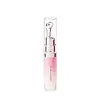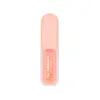What's inside
What's inside
 Key Ingredients
Key Ingredients

 Benefits
Benefits

 Concerns
Concerns

 Ingredients Side-by-side
Ingredients Side-by-side

Petrolatum
EmollientHydrogenated Polyisobutene
EmollientOctyldodecanol
EmollientPolyglyceryl-2 Triisostearate
EmulsifyingTriisostearyl Citrate
EmollientC10-30 Cholesterol/Lanosterol Esters
EmulsifyingAscorbyl Tetraisopalmitate
AntioxidantEthylene/Propylene/Styrene Copolymer
Ricinus Communis Seed Oil
MaskingSqualane
EmollientDipalmitoyl Hydroxyproline
Skin ConditioningSodium Hyaluronate
HumectantButyrospermum Parkii Butter
Skin ConditioningTocopherol
AntioxidantHydrogenated Castor Oil
EmollientPalmitoyl Tripeptide-1
Skin ConditioningCeramide NP
Skin ConditioningCeramide Ns
Skin ConditioningCeramide As
Skin ConditioningCeramide EOP
Skin ConditioningCeramide AP
Skin ConditioningParfum
MaskingButylene/Ethylene/Styrene Copolymer
Ethylhexyl Palmitate
EmollientDisodium EDTA
Tribehenin
EmollientSorbitan Isostearate
EmulsifyingPentaerythrityl Tetra-Di-T-Butyl Hydroxyhydrocinnamate
AntioxidantGlycerin
HumectantHydrogenated Lecithin
EmulsifyingPetrolatum, Hydrogenated Polyisobutene, Octyldodecanol, Polyglyceryl-2 Triisostearate, Triisostearyl Citrate, C10-30 Cholesterol/Lanosterol Esters, Ascorbyl Tetraisopalmitate, Ethylene/Propylene/Styrene Copolymer, Ricinus Communis Seed Oil, Squalane, Dipalmitoyl Hydroxyproline, Sodium Hyaluronate, Butyrospermum Parkii Butter, Tocopherol, Hydrogenated Castor Oil, Palmitoyl Tripeptide-1, Ceramide NP, Ceramide Ns, Ceramide As, Ceramide EOP, Ceramide AP, Parfum, Butylene/Ethylene/Styrene Copolymer, Ethylhexyl Palmitate, Disodium EDTA, Tribehenin, Sorbitan Isostearate, Pentaerythrityl Tetra-Di-T-Butyl Hydroxyhydrocinnamate, Glycerin, Hydrogenated Lecithin
Polyisobutene
Ethylhexyl Palmitate
Emollient3-O-Ethyl Ascorbic Acid
Skin ConditioningCetyl Ethylhexanoate
EmollientButyl Methoxydibenzoylmethane
UV AbsorberOctyldodecanol
EmollientDiisostearyl Malate
EmollientPrunus Amygdalus Dulcis Oil
Skin ConditioningHydrogenated Styrene/Isoprene Copolymer
Silica Dimethyl Silylate
EmollientCeramide NP
Skin ConditioningTocopherol
AntioxidantCamellia Japonica Seed Oil
EmollientVitis Vinifera Seed Oil
EmollientButyrospermum Parkii Butter
Skin ConditioningOctocrylene
UV AbsorberVanillyl Butyl Ether
MaskingParaffinum Liquidum
EmollientCI 15850
Cosmetic ColorantCI 77491
Cosmetic ColorantCI 15985
Cosmetic ColorantPolyisobutene, Ethylhexyl Palmitate, 3-O-Ethyl Ascorbic Acid, Cetyl Ethylhexanoate, Butyl Methoxydibenzoylmethane, Octyldodecanol, Diisostearyl Malate, Prunus Amygdalus Dulcis Oil, Hydrogenated Styrene/Isoprene Copolymer, Silica Dimethyl Silylate, Ceramide NP, Tocopherol, Camellia Japonica Seed Oil, Vitis Vinifera Seed Oil, Butyrospermum Parkii Butter, Octocrylene, Vanillyl Butyl Ether, Paraffinum Liquidum, CI 15850, CI 77491, CI 15985
 Reviews
Reviews

Ingredients Explained
These ingredients are found in both products.
Ingredients higher up in an ingredient list are typically present in a larger amount.
This ingredient is also known as shea butter. It is an effective skin hydrator and emollient.
Emollients help soothe and soften your skin. It does this by creating a protective film on your skin. This barrier helps trap moisture and keeps your skin hydrated. Emollients may be effective at treating dry or itchy skin.
Shea butter is rich in antioxidants. Antioxidants help fight free-radicals, or molecules that may harm the body. It is also full of fatty acids including stearic acid and linoleic acid. These acids help replenish the skin and keep skin moisturized.
While Shea Butter has an SPF rating of about 3-4, it is not a sunscreen replacement.
Shea butter may not be fungal acne safe. We recommend speaking with a professional if you have any concerns.
Learn more about Butyrospermum Parkii ButterCeramide NP is a type of ceramide and formally known as ceramide 3.
Ceramides are intercellular lipids naturally found in our skin that bonds dead skin cells together to create a barrier. They are known for their ability to hold water and thus are a great ingredient for dry skin.
Ceramides are an important building block for our skin barrier. A stronger barrier helps the skin look more firm and hydrated. By bolstering the skin ceramides act as a barrier against irritating ingredients. This can help with inflammation as well.
If you would like to eat ceramides, sweet potatoes contain a small amount.
Read more about other common types of ceramides here:
Ceramide AP
Ceramide EOP
Ethylhexyl Palmitate, also known as octyl palmitate, is created from 2-ethylhexyl alcohol and palmitic acid. It is a fatty acid ester.
The fatty acid content of Ethylhexyl Palmitate makes it an emollient. Emollients help soften and hydrate your skin by trapping moisture within.
Ethylhexyl Palmitate is also used to help improve the texture of cosmetics. It helps other ingredient dissolve in products and help disperse ingredients more evenly.
You'll likely find this ingredient in sunscreen, as it is often used to mix UV-blocking ingredients such as avobenzone and ethylhexyl triazone.
It can also help stabilize the fragrances in a product as a fragrance fixative.
Ethylhexyl Palmitate can be used to substitute mineral oil.
Due to its high fatty acid content, it may not be fungal-acne safe.
Learn more about Ethylhexyl PalmitateOctyldodecanol is a fatty alcohol. It is primarily used to enhance the texture of products.
As an emulsifier, Octyldodecanol helps prevent the oils and waters from separating. It also prevents ingredients from creating foam when shaken.
Octyldodecanol is created by reducing fatty acid to an alcohol.
Due to its high molecular weight, it does not get absorbed into the skin.
Learn more about OctyldodecanolTocopherol (also known as Vitamin E) is a common antioxidant used to help protect the skin from free-radicals and strengthen the skin barrier. It's also fat soluble - this means our skin is great at absorbing it.
Vitamin E also helps keep your natural skin lipids healthy. Your lipid skin barrier naturally consists of lipids, ceramides, and fatty acids. Vitamin E offers extra protection for your skin’s lipid barrier, keeping your skin healthy and nourished.
Another benefit is a bit of UV protection. Vitamin E helps reduce the damage caused by UVB rays. (It should not replace your sunscreen). Combining it with Vitamin C can decrease sunburned cells and hyperpigmentation after UV exposure.
You might have noticed Vitamin E + C often paired together. This is because it is great at stabilizing Vitamin C. Using the two together helps increase the effectiveness of both ingredients.
There are often claims that Vitamin E can reduce/prevent scarring, but these claims haven't been confirmed by scientific research.
Learn more about Tocopherol